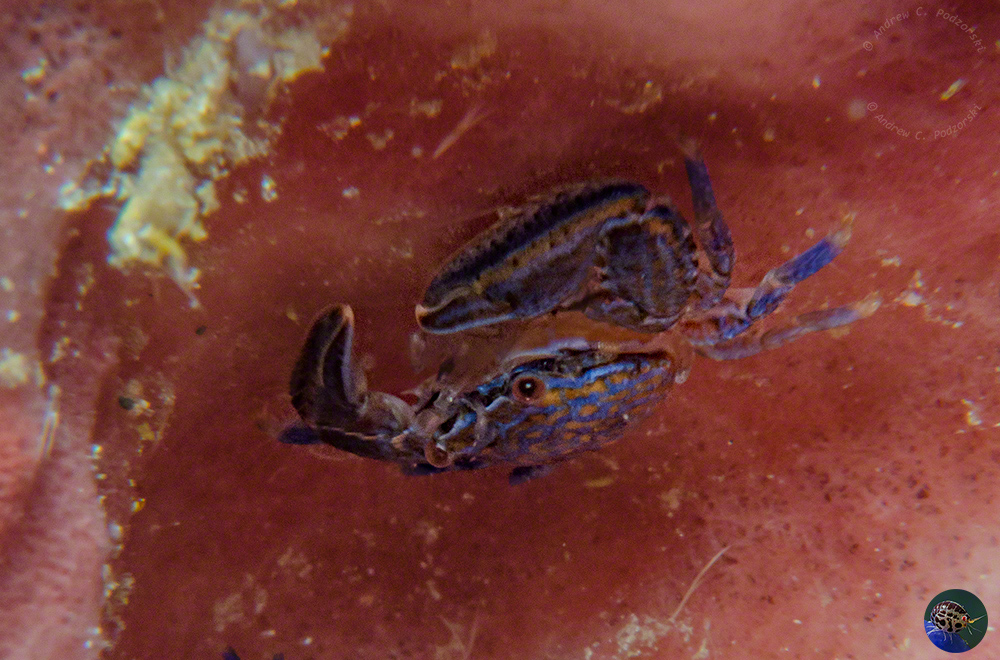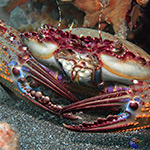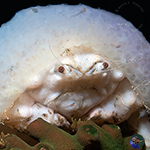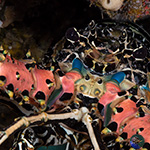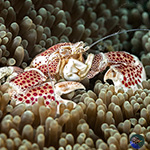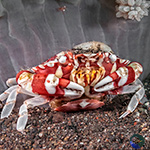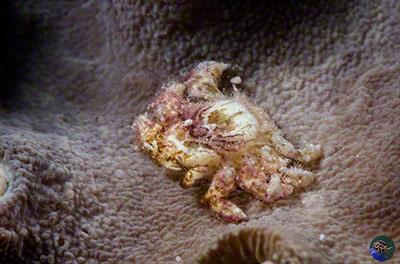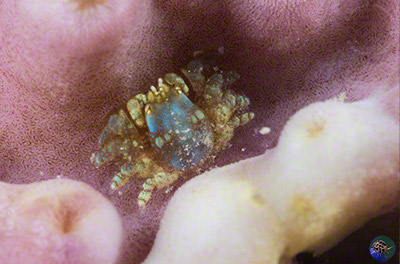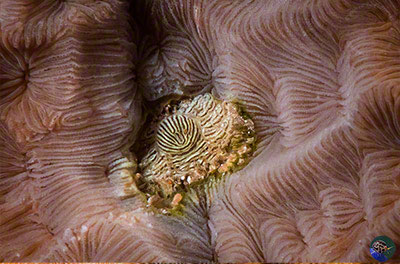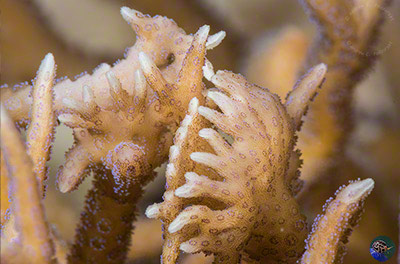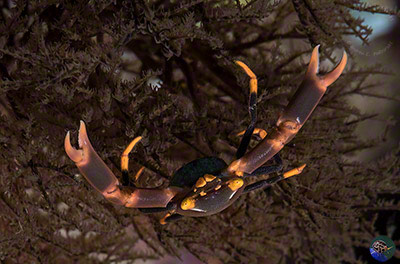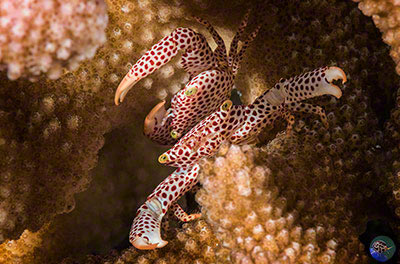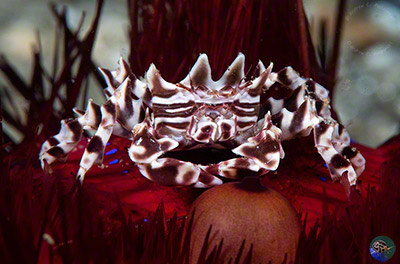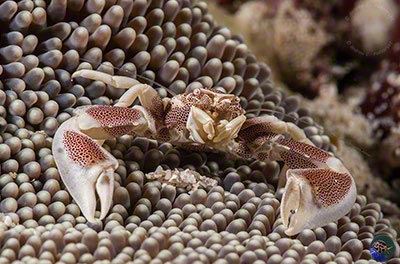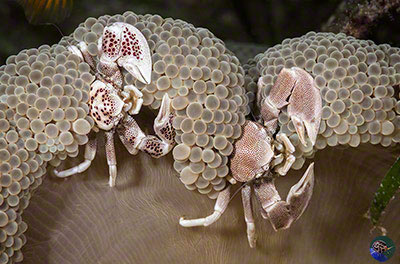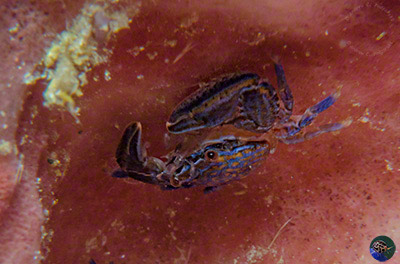Crabs & Lobsters
Little studied & many are new!
Crabs & Hard Corals

Hard corals are home to a wide range of crabs that are either cryptic or use the corals to hide in. Tip the balance of life for the corals, and the crabs suffer as does everything that depends on the crabs.

Submit
Coral Crabs

A group of different crab families have taken up resident in much-branched hard corals, black corals and certail soft corals.
When you look into a colony of a tighly branched hard coral, especially at night, you are likely to see quite a few small crabs facing you with their claws aimed in your direction. The crabs themselves are protected by the coral, but anything coming too close to the coral will get a sharp nip on the mouth.
The genus Quadrella has a number of species that live in the compact black corals belonging to the genus Cupressopathes. Others are restricted to the hanging colonies of the yellow Chironephthya where their own yellow colouration helps them blend in with the softcoral. An undescribed Trapezid crab is often seen on the coral Tubastrea micrantha.

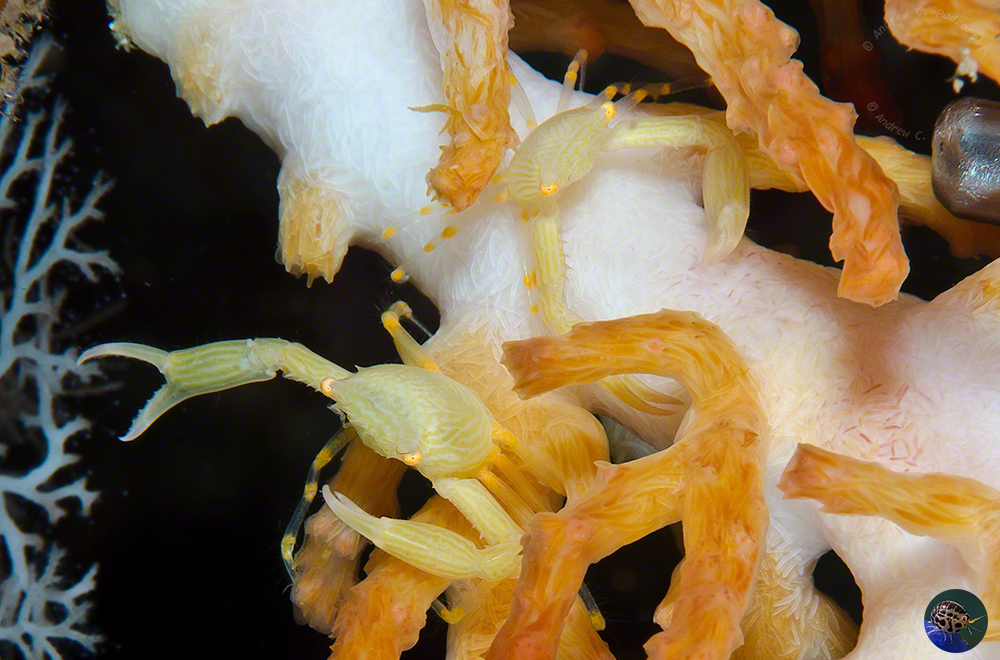





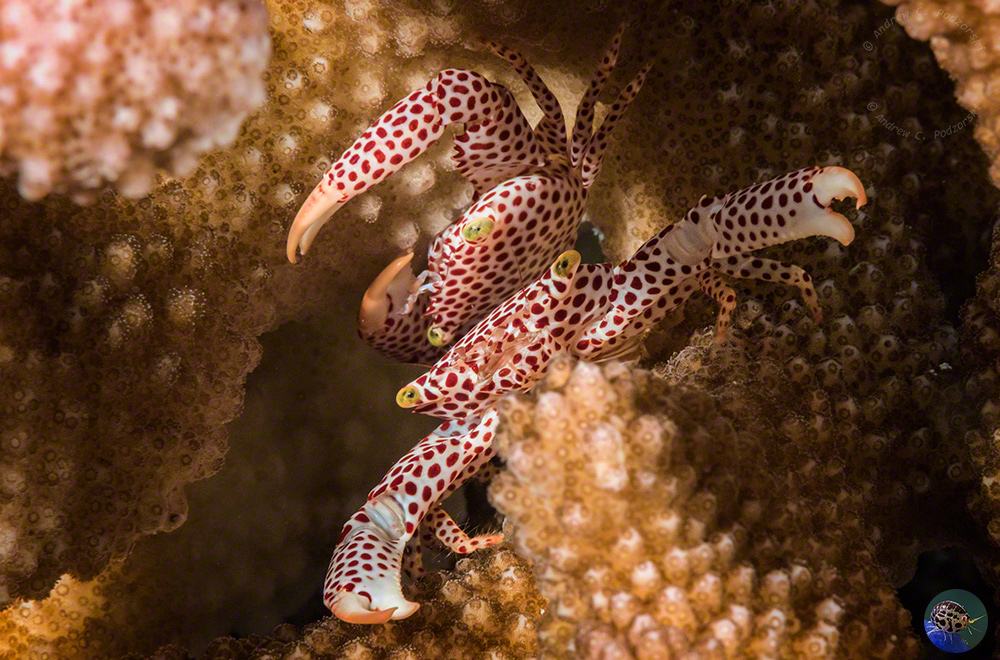
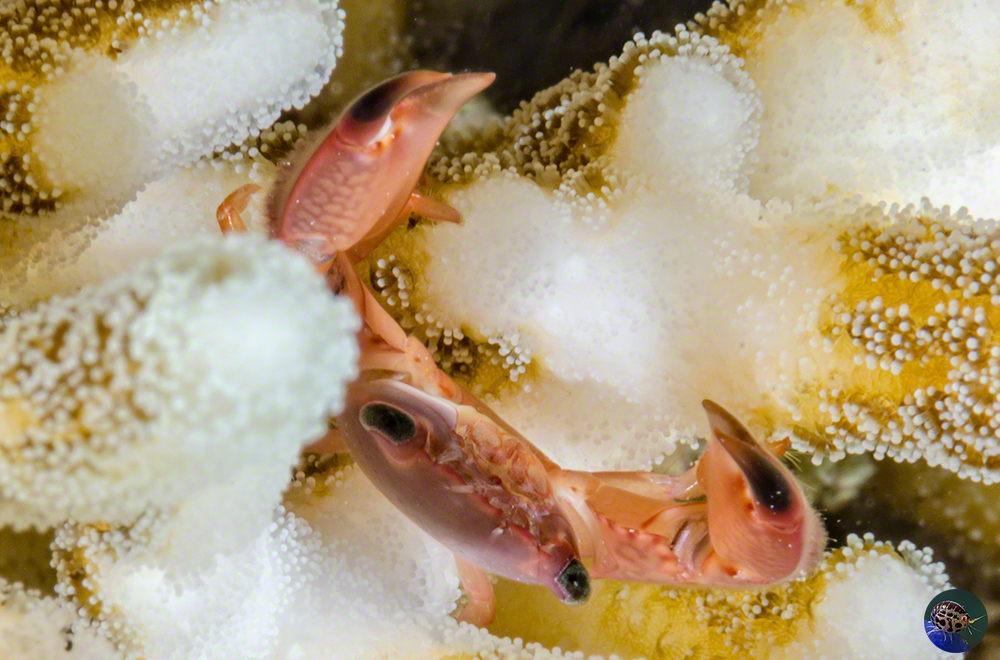

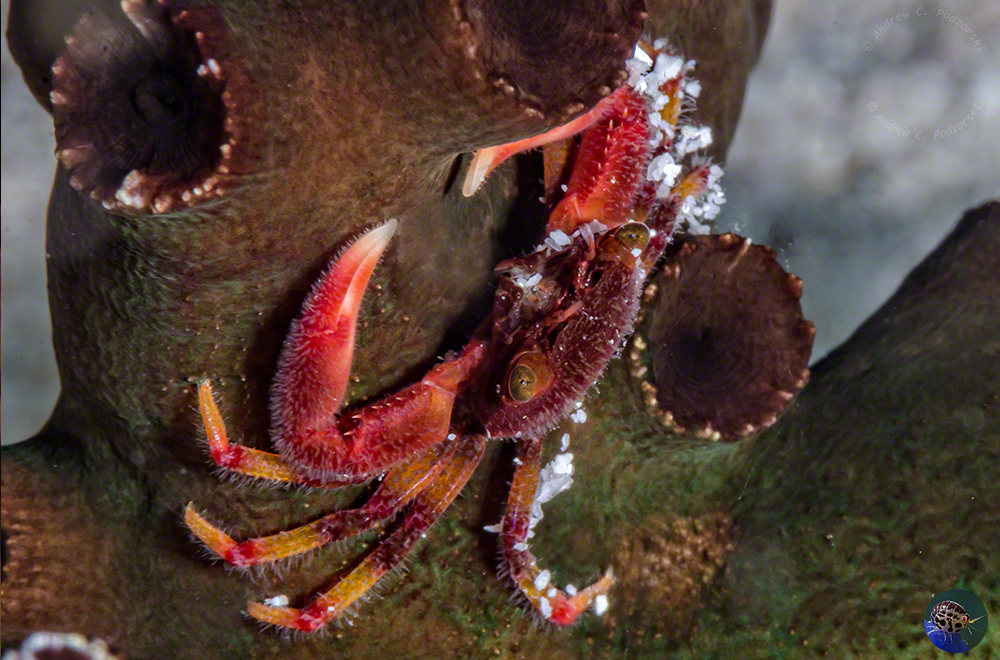



Gall Crabs

Gall crabs are very small, cryptic and live in corals, so are rarely missed by divers. Viewed closely, they are often colourful. The females usually live deep in burrows in the coral, while the even smaller males forage on the coral surface.
What is not known is how they manage to settle from the plankton and not get eaten by the coral. How they make their burrows is also not fully understood.
In areas almost devoid of fish due to overfishing (e.g. Romblon, Philippines) they apear to be common. Reefs with large populations of wrasse, in particular Tube-lipped Wrass, they are difficult to find (pers. obs.).


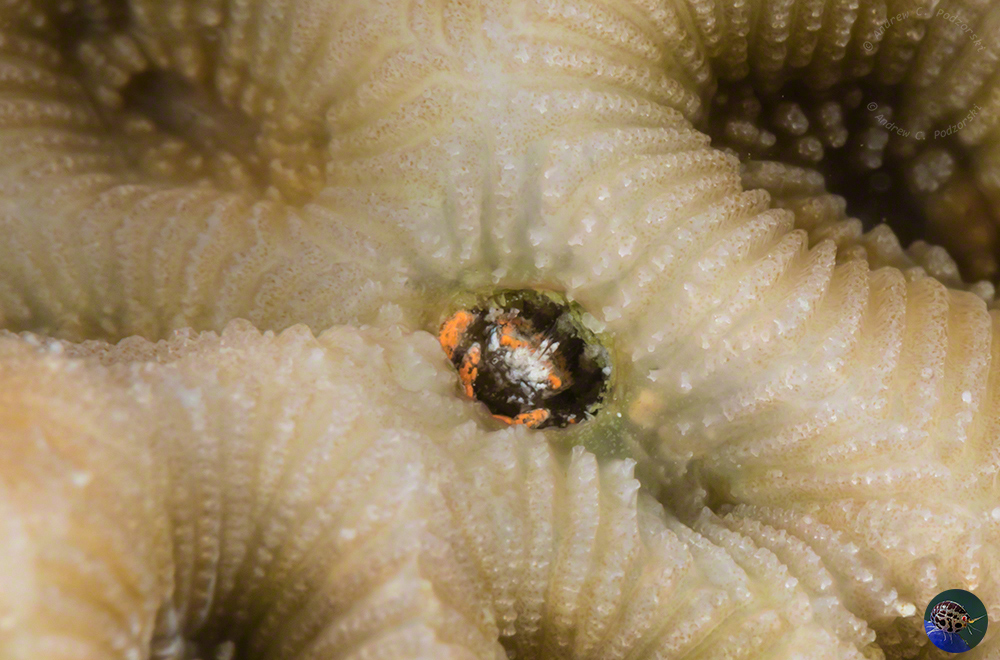
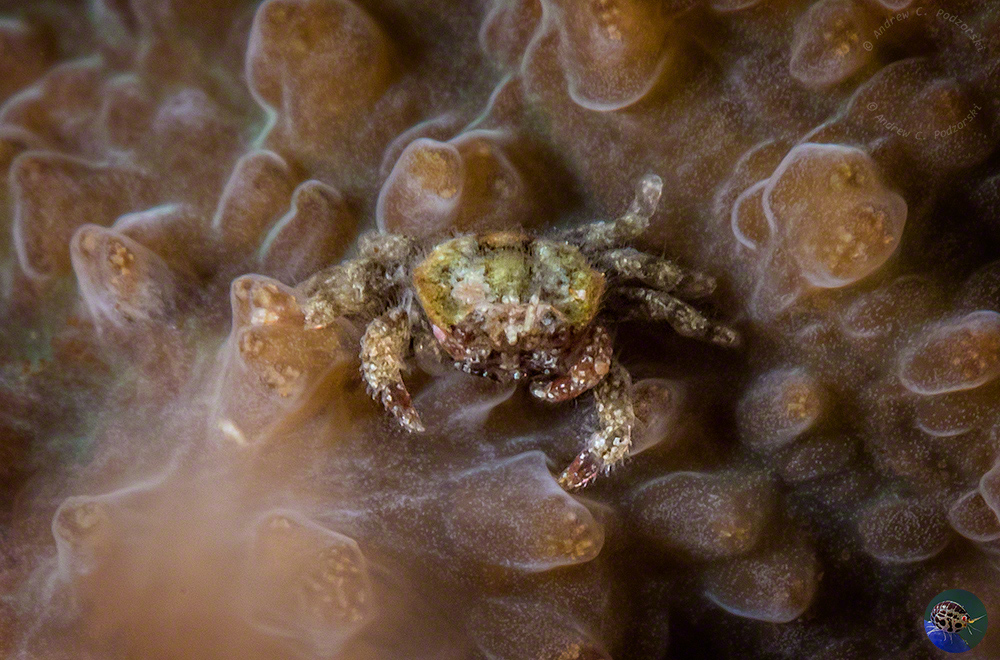
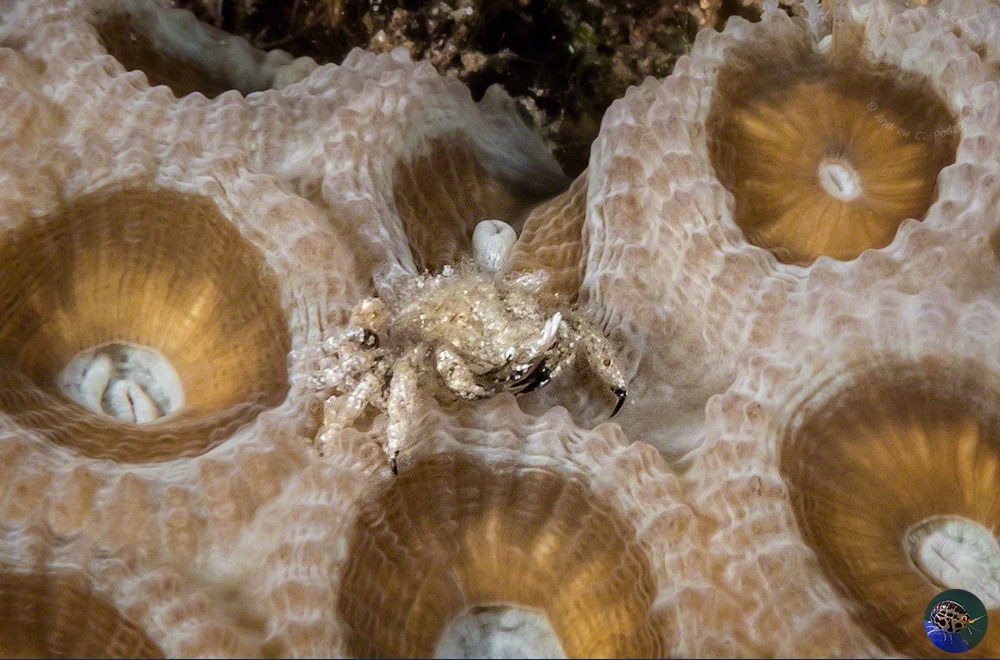
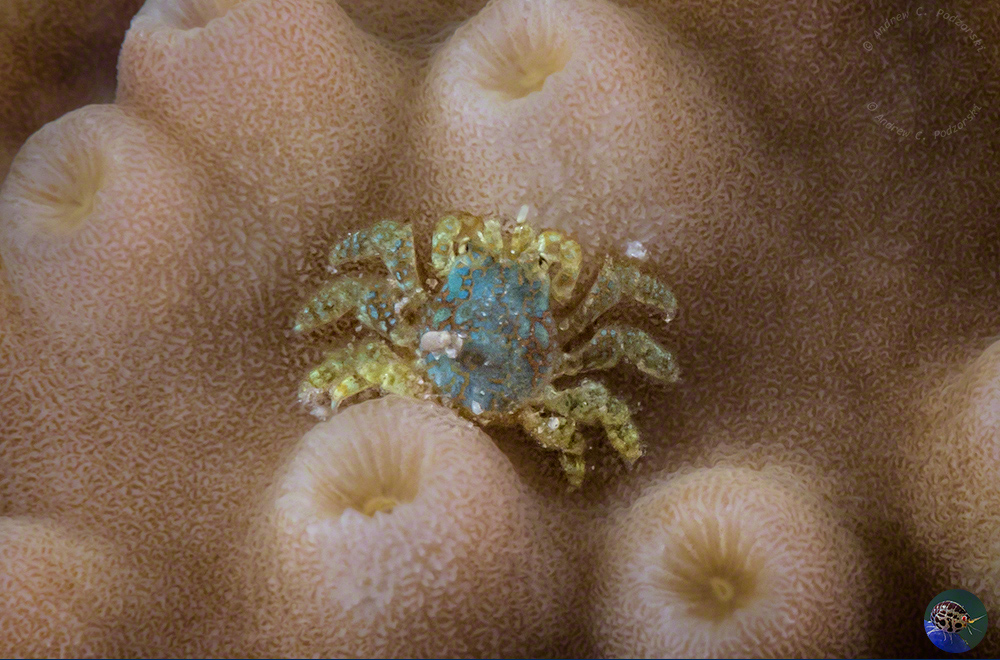
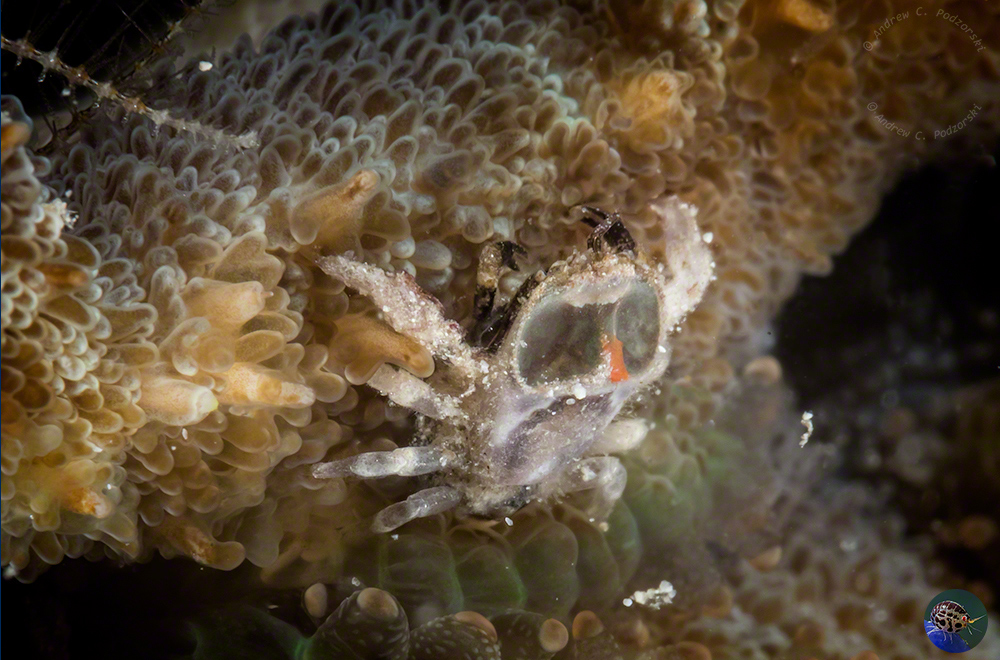









Porcelain Crabs

Porcelain crabs get their name from the ease that limbs break off when they are attacked. They are as fragile as porcelain. They are not true crabs, having only 3 and not 4 pairs of walking legs. Together with squat lobsters, they may share a common ancestor.
They are small and many are commensals, living in soft corals and sea pens (Lissoporcellana & Porcellanella), whereas the larger Neopetrolisthes is commensal with sea anemones. Alliaporcellana is often found hiding in large barrel sponges.
The large claws are mostly used for fighting though some food can be picked up by them. They are however primarily plankton feeders. The third pair of maxilipeds have developed a fan of still hairs which the crabs keep in contant movement like hand-nets being continuously pulled through the water. Once every so often the fans are cleaned of plankton by pulling them past the mouth.








